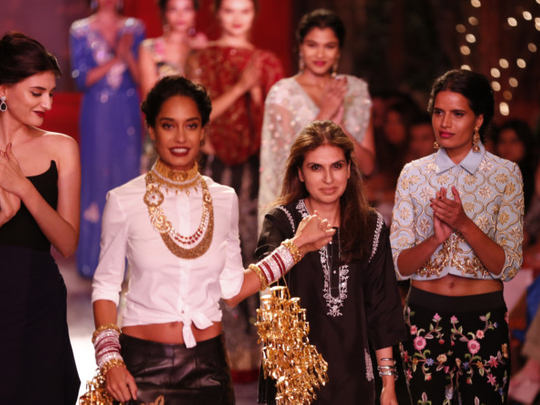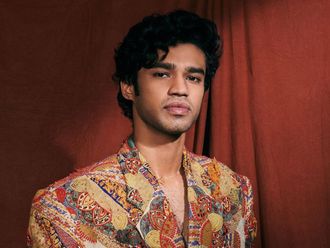
Model and actress Lisa Haydon walked down the Shree Raj Mahal Jewellers India Couture Week (ICW) ramp in New Delhi flaunting a contemporary bridal lehenga designed by Monisha Jaisingh.
Her look as a bride was complete with “chooda” and “kaliras” (bridal accessories specific to the Punjabi and Sikh wedding traditions).
Haydon’s appearance on the ramp was accentuated by Jaisingh’s heavily embroidered lehenga, which she teamed with a white knotted top to add a modern twist to the attire. Exquisite jewellery pieces by the fashion extravaganza’s title sponsor complemented the overall look, showcased on Thursday night.
The models sashayed down the ramp to showcase the “World Bride” range, inspired by the lifestyles of the high-borne from the past. The collection’s inspiration was a fusion of Indian, Mughal and European styles of monarchy architecture and lifestyle.
Showcasing the modern, confident and edgy brides, the pieces captured the drama of the 18th century, especially the Rococo style known for its splendour, grandeur and luxury.
Jaisingh used sensuous draping from luxe fabrics featuring golden embroideries on light and dark surfaces. The intricate embroidery took inspiration from the homes of the high-borne in Rococo style, promoted by Madame de Pompadour — King Louis 15’s official mistress.
“World Bride” also took its influence from the City Palace, Jaipur, which includes the Chandra Mahal and Mubarak Mahal palaces and other buildings. The palace complex incorporates an impressive and vast array of courtyards, gardens and buildings, which has been captured in the form of imagery and intricate embroidery in Jaisingh’s collection.
The silhouettes were constructed keeping in mind the Indian body type which makes it commercially viable. There were sensuous sari gowns, swirling lehengas, embellished leggings, sherwanis, evening wear, and structured versions of the kurti in fabrics such as georgette, leather, velvet, heavy satin, stretch net and nylon.
Neutral colours such as ivory, ebony, silver, gold and denim blue; sorbet colours such as mint green, ice blue, banana yellow, pale pink; earthy tones such as olive green, brick red and burnt umber, tangerine; jewel tones such as emerald green, ruby, topaz, and turquoise; and monotones such as black and white, have been used for the line.
Digital printing, cut-work embroidery, mukaish embroidery, Persian embroidery techniques, zardozi embroidery and other hand drawn embroideries were well-incorporated in the line.












